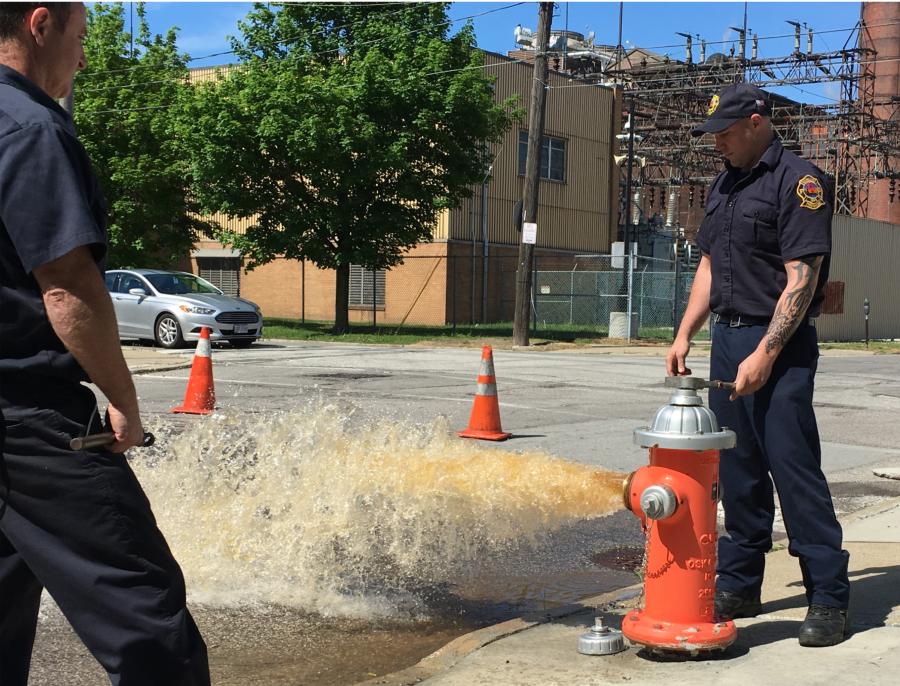Updating our Hydrant Inspection Process with Teamwork and Technology

Cleveland Water maintains and supplies water to approximately 75,000 fire hydrants in our service area. To ensure they’re all functioning properly, we rely on the annual hydrant flushing efforts of local fire departments.
In the past, fire hydrant issues that were identified during annual hydrant flushing were reported by Cleveland Fire to Cleveland Water through an informal system of emails, telephone calls, and pen-and-paper requests.
This year, we teamed up with Cleveland Fire to streamline the annual flushing and inspection of the city’s 18,000-plus fire hydrants and increase the efficiency with which hydrant issues are reported.
Cleveland Water uses Cityworks, a web-based GIS-centric asset management system, to track all work done on our distribution and maintenance assets, including hydrants. Prior to the start of the 2018 flushing season, a new hydrant inspection form was created in Cityworks for each hydrant in the city of Cleveland. The inspection form was designed to be easy to use in the field while maximizing the amount of information the fire department could gather about hydrant conditions.
Each Cleveland fire suppression unit was given a tablet with Cityworks installed to track hydrant flushing as it was performed. The firefighters would locate the hydrant to be flushed on the Cityworks map and select it, pulling up an online checklist. They would then report the status of the flush, identify any issues with the hydrant, and complete their inspection.
If any issues were identified, fire personnel created a hydrant investigation work order directly in the field. This work order notified Cleveland Water staff that the hydrant in question required additional attention, ranging anywhere from a minor repair to a total replacement.
The 2018 hydrant flushing season identified 13% of Cleveland’s fire hydrants as requiring further attention. Of those hydrants, just under 30% (almost 700) required complete replacement.
This real-time electronic-based inspection procedure ensured that complete information on each hydrant, as well as any related work requests, were shared with us immediately and on one shared platform – a major improvement from the previous pen-and-paper system.
